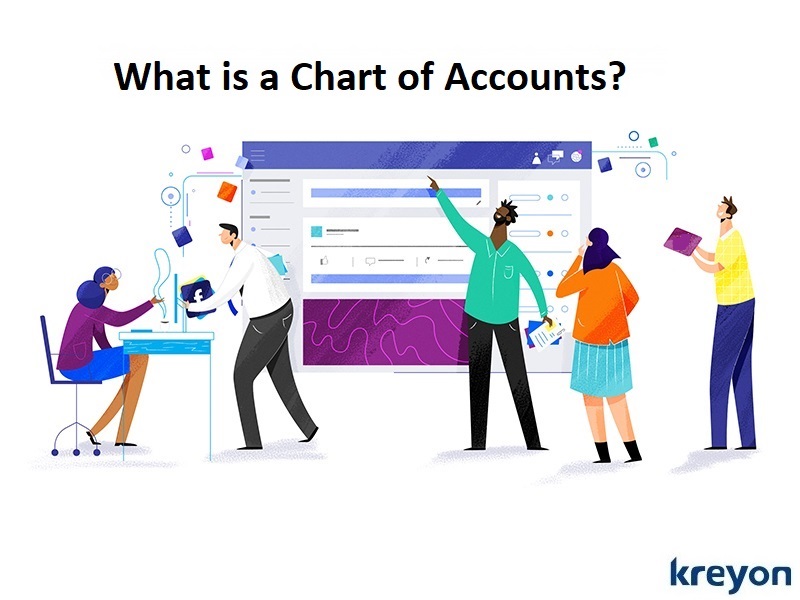What is a Chart of Accounts?

A chart of accounts provides the basic representation of an organisation’s accounts for recording transactions. A dynamic chart of accounts creates accounting headers based on a company’s needs. The five types of accounts used in accounting are:
i) Asset Accounts
ii) Liabilities
iii) Equity
iv) Income
v) Expenses
The chart of accounts provides a break up of accounting transactions in these category of accounts. There are sub categories of different account headers for business reporting and tax purposes. Here’s a classification of each of these chart of accounts.
Asset Accounts
The assets are the things that add value to your business. For e.g. a business could own properties, lands, vehicles and cash. All these are categorised as assets. The assets are further divided in different categories like:
a) Current Assets: The current assets are short term investments, inventory and cash for a business. The current assets are typically cash equivalents and can be converted to cash within a year. Accounts receivables & inventory are also termed as current assets.
b) Fixed Assets: The long term assets or the fixed assets have a life cycle of more than 1 year. These assets could be tangible or intangible. The assets add to the net worth of a business.
There could be further subcategories of Current assets like Cash, Inventory, Petty Cash etc. As per the organisational needs, the dynamic subcategories can be added with their account codes to represent the accounting transactions. Fixed assets can be further divided into categories like land & building, Furniture & fittings, Computer Equipment, Intangible assets etc.
Liability
Liability accounts reflect the debt for a business. It represents the payables and the loans taken by the organisation. The liabilities are classified as:
a) Short Term Liabilities: These are typically expected to be paid within a year. For e.g. salary payables, vendor payables or short term loans.
b) Long term Liabilities: The long term liabilities of a business represent debts or loans for more than one year. These are the non current liabilities. For e.g. A bank loan with a term of 5 years gets listed here.
The liabilities typically reduce the networth of a business. Any organisation that has more liabilities than assets typically has a negative net worth. This creates potential solvency issues. It may be noted that companies that are rapidly expanding also have high liabilities to assets ratio.
Equity
The equity of a business is a measure of its net worth. By taking the difference of assets and liabilities, the networth of a business is calculated.
Equity = Assets – Liabilities
The equity can have sub accounts like:
a) Authorised Share Capital: This is the maximum value of capital that the company can raise by allotting its shares.
b) Common Stock: This is the value of the common stock allotted by the company. For e.g. if the company issued 20,000 shares at 100$ per share, the common stock would be $2,000,000.
c) Retained Earnings: The retained earnings is the net income for a business after paying out dividends to its shareholders. Retained earnings can also be reinvested into the business without paying the dividends.
The Equity of a business is a good measure of the company’s net worth and financial position. The Equity is the value that would be returned to a company’s shareholders if all of the assets were liquidated and debts paid off.
The liability to equity ratio indicates lower risk for a business. A higher liability to equity ratio indicates that debt holders have more claim on assets of a company than its equity holders. For e.g. a ratio of 4 indicates that lenders will have 4 times more claim on assets than its equity holders. High debt/liability to equity ratio also indicates the company has used its debt for financing its growth.
Income

The income accounts represent the revenue earned by the company. This could be further classified according to the company’s products or services. The sum total of all revenues is treated as the income for the year.
The income accounts can be further classified into sub categories like:
a) Income from Products/Services
b) Income from Investments
c) Income from discontinued operations etc.
The income header is the basis on which the profit and loss report is computed for an organisation. All revenue reported for a financial year is represented here. All revenue arising from the company’s continued and discontinued operations are recorded here. The sub categories and classifications provide a detailed break-up of company’s revenue and its analysis.
Expenses
The expenses accounts are used for recording all the operational and non operational expenses from the business. The expenses accounts can be used to add subcategories like:
a) Employee Benefits: This expense subcategory is used for capturing the employee payroll and benefits expenses incurred for the current financial year.
b) Operational Expenses: This is used for categorising operational expenses like office maintenance, lease, electricity, water etc.
c) Advertising: This category is used for advertising and marketing expenses. All the expenses incurred on marketing and promotion of products/services for a business can be recorded here.
The chart of accounts can be used for adding more expenses under this header. The expenses of a company are represented in the profit and loss report for the financial year in which they’re reported. A company’s profitability is determined by its ability to generate consistent revenue which is greater than its expenses.
Setting up Chart of Accounts

With the basic categories of accounts, an organisation can set-up its chart of accounts. The subcategories can be added under the 5 main headers. Organisations also assign codes to the chart of accounts as a good accounting practice for easy classification of accounts.
A simple 3 or 4 digit code can be assigned to each account type. A dynamic representation of the chart of accounts is as follows:
Assets: A400 to A499
Cash: A405
Inventory: A408
Furniture & Fittings: A420
Liabilities: L500 to L599
Accounts Payable: L505
GST Tax Collected: L509
VAT Collected: L514
Equity: E600 to E699
Director’s Equity: E615
Shareholder’s Equity: E617
Income: I700 to 799
Income from Interest: I720
Product A/C Sales: I740
Maintenance Revenue: I750
Expenses: X800 to X899
Advertising: X840
Labour: X850
Insurance: X870
The accounting software makes chart of accounts dynamic and easy to set-up. With a one time set-up, the organisations can use their accounting software to operate and record accounting transactions smoothly.
